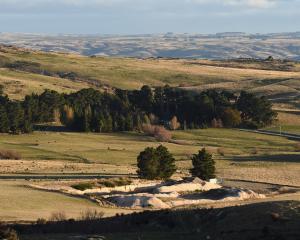
The young female pūteketeke, found dead by a member of the public on the shores of Bremner Bay, had two "sizable" pieces of plastic stuck in her gizzard, Lake Wānaka Grebe Project ambassador Petrina Duncan said.
"In a small young grebe these plastic pieces could restrict the passage of food into the gut and contribute to death by starvation."
The Australasian crested grebe was crowned Bird of the Century in November after a campaign by United States talk-show host John Oliver.
The plastic in the dead grebe was discovered following a postmortem by vet pathologists at Massey University, the largest of which was 5.5cm long.
Pieces of plastic could easily pass for something edible to a foraging grebe, Ms Duncan said.

While it was the only reported grebe death at Lake Wānaka this year, four others had been found around the shore of Lake Hāwea in autumn.
"We began sending them up to Massey University just in case there was some kind of disease affecting them.
"However, it seems that starvation is the most likely cause for all five birds found dead this year."
WAI Wānaka spokeswoman Jaylene Harper said the death of the Lake Wānaka grebe was an important reminder of the impact people’s actions could have on wildlife, but should also motivate locals to become more conscious of how they could mitigate that impact.
"By participating in cleanup efforts and taking a deeper look into our habits as consumers, we can create change together.
"Microplastics are just one of many pressures our waterways face today due to human impact.

WAI Wānaka is supporting the work of University of Auckland PhD student Veronica Rotman, who has been researching the impact of microplastics on Wānaka’s waters.
Her research, a collaboration between her university and the University of Otago, found microplastics in the digestive tract of trout living in Lake Wānaka.
The findings, coupled with the death of the grebe, meant it was likely other fish and bird species were ingesting microplastics as they entered the foodchain, Ms Harper said.
Members of the public who encountered a dead grebe were encouraged to contact the Lake Wānaka Grebe Project so the bird could be collected for examination.
"If a grebe is found injured or sick and still alive, then call the Doc [Department of Conservation] hotline immediately."












